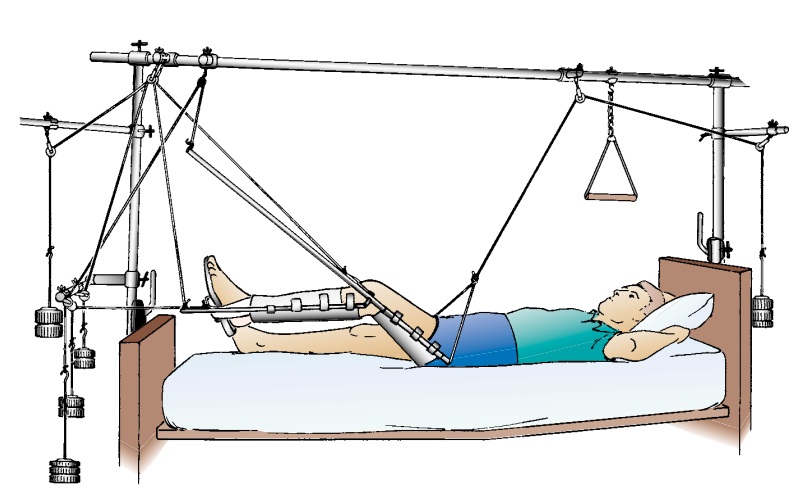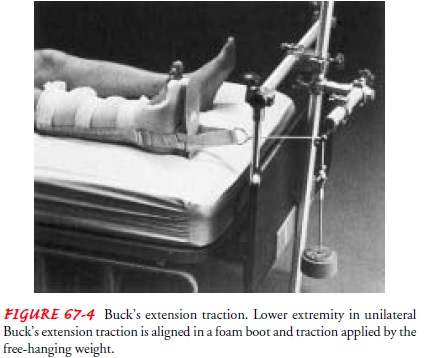Chapter: Medical Surgical Nursing: Musculoskeletal Care Modalities
Principles of Effective Traction

PRINCIPLES OF EFFECTIVE TRACTION
Whenever traction is applied, countertraction must be used to achieve effective traction. Countertraction is the force acting in the opposite direction. Usually, the patient’s body weight and bed position adjustments supply the needed countertraction.
The following are additional principles to follow when
caring for the patient in traction:
·
Traction must be continuous to
be effective in reducing and immobilizing fractures.
·
Skeletal traction is never interrupted.
·
Weights are not removed unless
intermittent traction is pre-scribed.
·
Any factor that might reduce
the effective pull or alter its resultant line of pull must be eliminated:
– The patient must be in good
body alignment in the cen-ter of the bed when traction is applied.
– Ropes must be unobstructed.
– Weights must hang free and not
rest on the bed or floor.
– Knots in the rope or the
footplate must not touch thepulley or the foot of the bed.
There are several types
of traction. Straight or running traction applies the pulling
force in a straight line with the body part rest-ing on the bed. Buck’s
extension traction (Fig. 67-4) is an exam-ple of straight traction. Balanced suspension traction (Fig. 67-5)
supports the affected extremity off the bed and allows for some patient
movement without disruption of the line of pull.


Traction may be applied
to the skin (skin traction) or
directly to the bony skeleton (skeletal
traction). The mode of application is determined by the purpose of the
traction. Traction can be applied with the hands (manual traction). This is temporary traction that may be used when
applying a cast, giving skin care under a Buck’s extension foam boot, or
adjusting the traction apparatus.
Related Topics